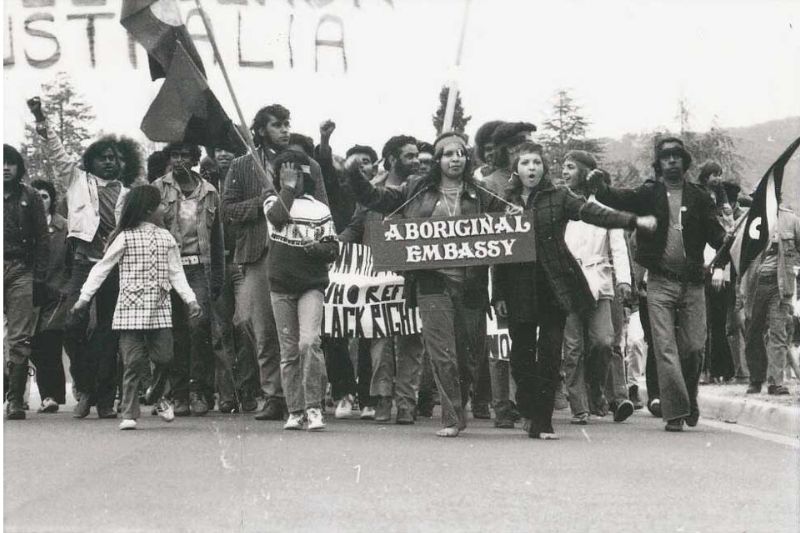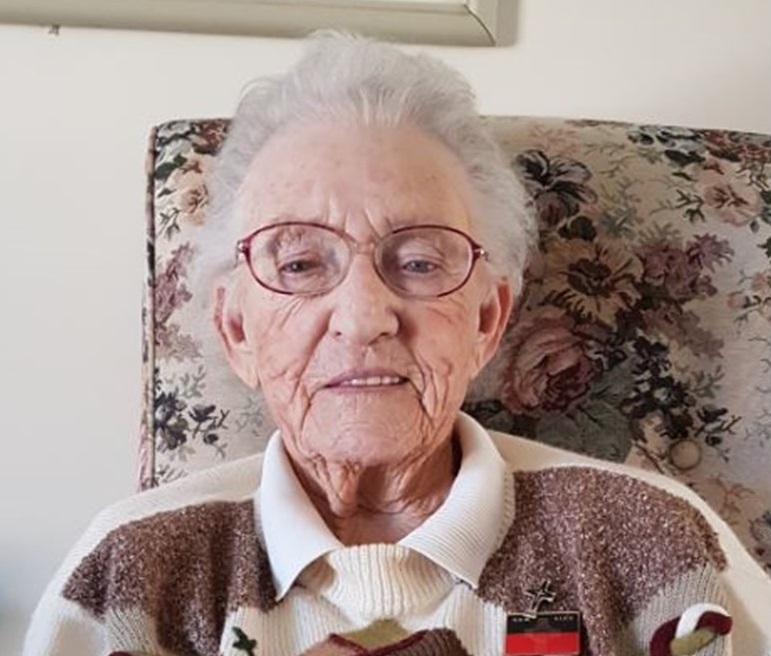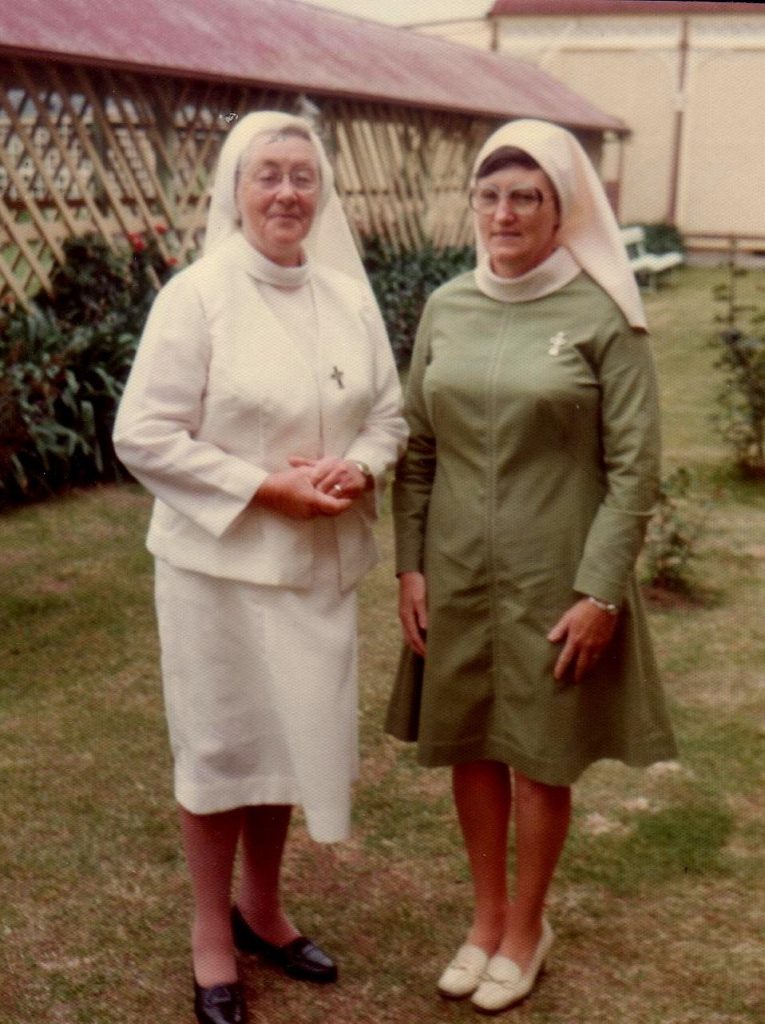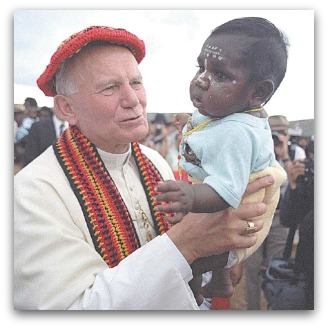Archived News Item
A long term friendship
June 7, 2023
The Aboriginal Tent Embassy, Canberra 1972 https://www.eurekastreet.com.au/article/the-aboriginal-tent-embassy–then-and-now
In 1972 the Aboriginal Tent Embassy was established in Canberra, a sign of protest against the then government’s approach to indigenous land rights. On 31 July 1972, some 2000 people gathered to show their support, among them was Sister Patricia Adams RSM in full black habit. While the sight of a religious sister at such an event was a curiosity for some, for Pat it sat firmly within her almost lifelong friendship with Australia’s Indigenous people and their cause for recognition and rightful place within Australian society.
“I was the only nun there. I was in a black habit and veil, and I slept on the floor with some koori people.
“The four nights I had there were wild, with lots of jokes and people were good to me.
“Our Mother Superior at the time must have given me permission to go, otherwise I wouldn’t have been able to be there.”

Pat Adams RSM
Pat entered the convent in 1949, at a time when Australia was a country that was sadly for the most part racist. Pat started out in her journey with aboriginal people after she saw how poorly they were being treated in Singleton where she was living.
“I entered the convent thinking they won’t keep me, but they did! Originally, I was a cook and all the local Aborigines would come to the back door of the convent and we would give them something to eat and a cup of tea.
“I was then trained as a teacher. I went to teach at a school before I finished at Teacher’s College and this is when I met my first bias against aboriginal people.
“A lot of people were sadly products of the society at the time, they didn’t do it because they believed in it, they did it because we didn’t have a curriculum with any aboriginal input.
“We were educated that aborigines were not human,” Pat said.
Although not fully trained at this stage as a teacher, Pat decided to redress the situation.
“I couldn’t find anything in the curriculum about aboriginal people and culture, so I added it into the curriculum for my third-grade class.
“I taught them about aboriginal dance and we even made a gunyah in the back yard of the school, much to the dismay of some!”.
Pat sadly faced considerable opposition, not from the students, but from education administrators.
“At one stage I was threatened, by the leader at the education office, that I couldn’t teach in the Catholic school system.
“It was a fight, I had to fight all the way!”.
While acknowledging that she would not have been able to journey with aboriginal people if it wasn’t for the support of her Sisters of Mercy community, she acknowledges that sometimes she had to resort to means used by Catherine McAuley herself.
“You do what God wants you to do. We know that Catherine brought a little orphan girl home under her skirt because she was frightened that the other sisters may not like the idea and I did the same on occasion.
“The sisters living with Catherine got used to it and my community did too”.

Sr Pat Adams (right) with Sr M Angela taken in the late 1970s.
In the mid-1970s, the Mother Superior at the time, Sister Dorothy Campion asked Pat where she wanted to take her ministry and she said she wanted to do aboriginal ministry full-time.
“In response, she provided me with a car and away I went. I used to drive up from Raymond Terrace at 4am in the morning to places such as Foster and Taree. In the end, Dorothy organised for me to stay a couple of nights each week with the Josephites in Cloncurry and in Taree.
“I then got a house in Taree and Foster, I used to spend a lot of time accompanying aboriginal people to court and assisting in getting aboriginal children out of care. Recognising the need, I also established an orphanage”.
Pat said that while it was beautiful being with the aboriginal people, it was also sad and tragic at times.
“Alcohol was the big problem and the little ones would be roaming around the streets with nothing on and nothing to eat.
“There was one little girl I worked with who was told she was not able to attend the local state school because she was aboriginal.
“I worked with people who had been bruised and wounded and yet they would come back smiling”.
Pat said during her time in Taree she buried sixty people, not only just being at the funeral but also digging the graves.
“Some mornings they would come and say ‘Sister the grave is not big enough’ and I would go out and dig some more!’.
“I always thought that Catherine was there helping me.
Pat said the support of her fellow Mercies at this time and since was and has been terrific.
“In time other sisters joined me in the house in Taree, with many sisters coming to assist”.

Pope John Paul II in Alice Springs https://www.eurekastreet.com.au/article/the-pope-in-alice–25-years-on
When Pope John Paul visited Alice Springs in 1982, Pat organised for a busload of aboriginal people to see him.
“It was a rickety old bus! We left from Taree to Kempsey and picked some people up there and then drove to Alice Springs.
“Pope John Paul II was wonderful with the people.
“We were welcomed by the local people. It brought it home to me that they were a group of people who believed in their culture, and it was really the start of the whole of Australia beginning to recognise that”.
In addition to her work in the community, Pat worked with the aboriginal people to establish the New South Wales Aboriginal Catholic Council, as well as accompanying them to meetings of the St Vincent de Paul Society State Councils. Patricia has also studied aboriginal language and spirituality at Adelaide University and has been all over Australia over the years attending gatherings and undertaking ministry.
Pat said that she has been very blessed to have had an association over many decades with aboriginal people.
“I have the most beautiful community’ of aboriginal people around me. They love me and I love them which is the basis of all that I have done in the name of Mercy,” Pat said.
Click here to return to Just Mercy
